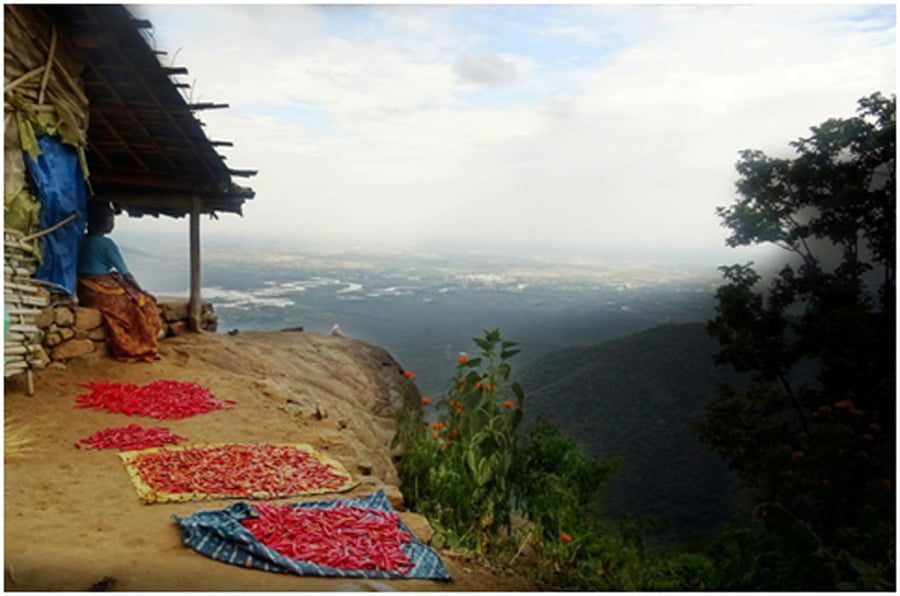About
Sky Islands is an independent digital platform which aims to connect communities across the Western Ghats towards engagement, action and storytelling. We are administered by The Kodai Chronicle Trust.
The Western Ghats is one of the greatest and most threatened biodiversity hotspots on Earth, and the fate of its inhabitants – humans, flora and fauna – affects us all. This pioneering platform will: present stories enriched by lived experience, told by indigenous people, farmers and more, in multiple mediums; showcase other valuable initiatives in the region; provide tools for navigating life in the hills; help provide agency for our hill stations and enable informed action; connect us so we stand stronger, together.
Click for more details: our working business plan, preview event and introductory video.
We seek to use storytelling to celebrate and showcase the biodiversity of the Western Ghats, inspired by its sky islands; to connect and explore challenges unique to mountain ecosystems; to encourage sustainable development; to champion indigenous voices and community-driven stewardship.
A sustainable future for the Western Ghats: inclusive, diverse, connected to other mountain ecosystems.
Our founding editor and publisher Rajni George has 20 years of experience in publishing, journalism and development at organizations such as Penguin Random House, South Asia Speaks, The Caravan, Granta and the United Nations. She and our original team – a community-driven eco-publication from the Palani Hills, The Kodai Chronicle (TKC), published from 2021 to 2024 – were recognised as Palani Hills Agents of Change in 2023. Our editorial board includes Nitin Padte, with decades of experience in journalism and education at institutions including The Indian Express, United World College and Adhyayan. Our chief development officer, Mary Therese Kurkalang, co-director of the Brahmaputra Literature Festival and lead consultant to The Himalayan Fellowship, has worked extensively with indigenous communities in the eastern Himalayas as well as organizations such as ProHelvetia and the Frankfurt Book Fair.
Murugeshwari, a contributing writer, is a daily wage agricultural labourer and member of the Paliyar adivasi community. Her TKC articles have been syndicated in Voices of Rural India and Adivasi Lives Matter, and anthologized in Between Heaven and Earth: Writings on the Indian Hills. She and our Tamil editor Kamakshi Narayanan are recipients of a grant from Shared Ecologies/ Shyama Foundation.
Janaki Sundaram, our managing and copy editor, worked at Penguin Random House India previously. Archana Puri is secretary.
Our advisors are: Sanctuary Asia founder Bittu Sahgal; writer and Madras Crocodile Bank managing trustee Zai Whitaker; evolutionary ecologist VV Robin; photographer and writer Ian Lockwood; climate educator and writer Yuvan Aves; social entrepreneur Meera K of Oorvani Foundation; photographer Ramya Reddy of The Nilgiris Foundation; and environmental impact professional Jacob Cherian.
We are administered by The Kodai Chronicle Trust (not-for-profit, eligible for 80G tax exemption and CSR funding): Avijit Michael, co-founder of Jhatkaa.org; celebrity chef and culinary historian Rakesh Raghunathan; and writer and environmentalist Lathika George.

From left to right: Reena Raghavamoorthy, TKC Trust secretary Archana Puri, Rajan, Sahaya Mary, Sky Islands founder Rajni George, TKC Trustee Rakesh Raghunathan, TKC Trustee Avijit Michael, Zai Whitaker. Photo: TKC Staff
The Western Ghats are an ancient mountain range that covers a stretch of 1,600 kilometres, parallel to the western coast of the Indian peninsula. They traverse the states of Gujarat, Maharashtra, Goa, Karnataka, Kerala and Tamil Nadu. Cloud cover helps maintain temperature and humidity throughout the various seasons. One of the world’s 36 biodiversity hotspots, it is also one of the eight ‘hottest hotspots’. These are rich, irreplaceable regions where the conservation of species can secure global biodiversity.
The Western Ghats have over 5,000 flowering plants, 139 mammals, 508 birds and 179 amphibian species; today, it is home to 325 globally threatened species (World Wildlife Fund).
Note: In Hindi, the word ‘ghat’ refers to a set of steps leading down to a river or a mountain pass; it is also used, at times, instead of ‘mountains’. The ghats are familiar and beloved to anyone who spends time in the hills.

Map: Insights on India

Eating in the Wild
Simrit Malhi
Wild foods are increasingly popular, as can be witnessed in the spate of festivals and events around them. A permaculture farmer pauses to consider how we forage and consume, today.
What is a sky island?
A sky island is a geographically isolated high-elevation or mountainous region that forms an island habitat distinct from its lower-elevation surroundings. These regions are often characterized by rich biodiversity and endemism as well as altitudinal migration. In the Western Ghats, shola sky islands contain a matrix of montane forests and grasslands, found in their highest reaches. Sky islands are surrounded by radically different lowland habitats.
The term was first introduced by Natt N Dodge in 1943, describing the Chiricahua Mountains as ‘a mountain island in a desert sea’ (Arizona Highways)- it was subsequently popularized in the ’60s. The southern part of the Western Ghats (south of Kudremukh and the BR Hills Kemmangundi) are the sky islands; of these, the largest human-inhabited ones (50 million people live in the Western Ghats, as per the 2014 census) are the Nilgiris and the Palani-Annamalai hills. Here’s a peek (video: Pollachi Papyrus).
‘For places like the Palani Hills with summits and plateaus, lofty and cool, so far removed from the sweltering plains below, the term “sky islands” is most fitting,’ photographer Ian Lockwood has noted. A conversation with scientist VV Robin sparked his imagination, and, later, ours – it is their preservation that we are inspired by, and centres our endeavour. Listen, here (audio clip: Shola Sky Islands).
